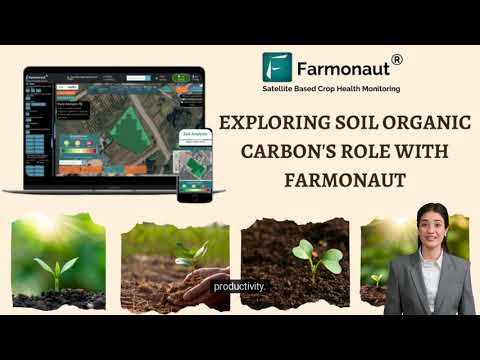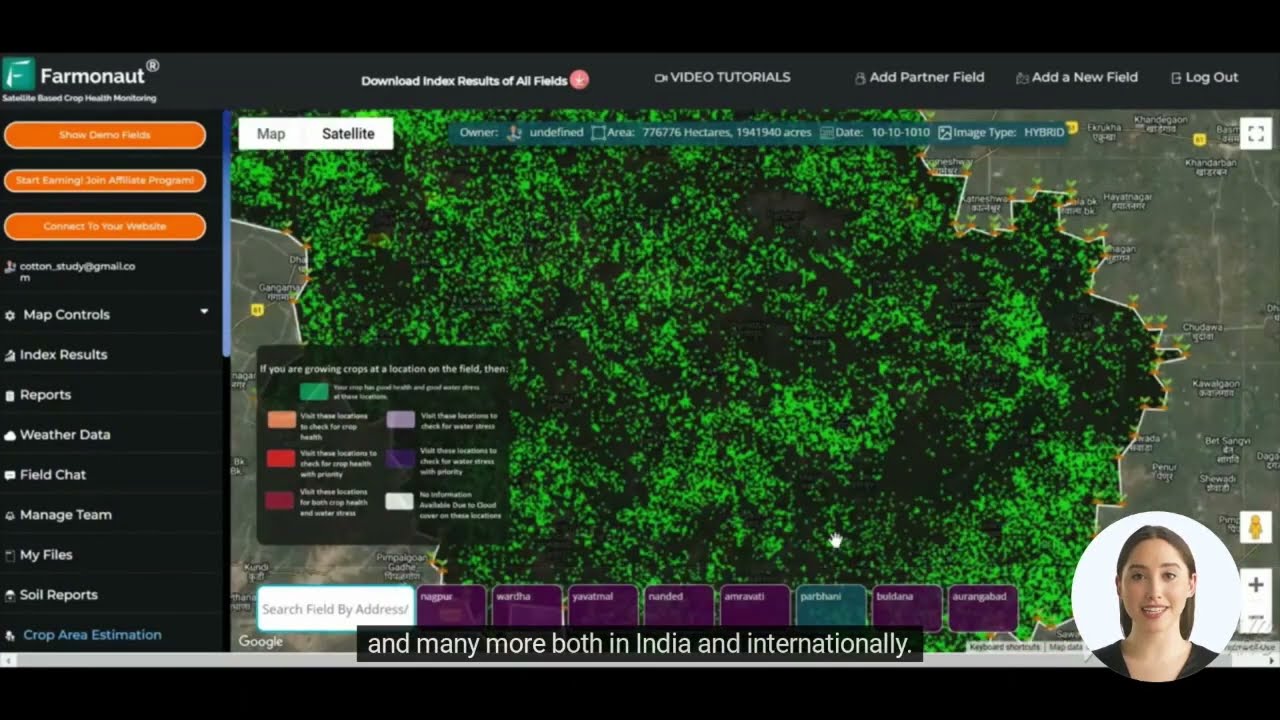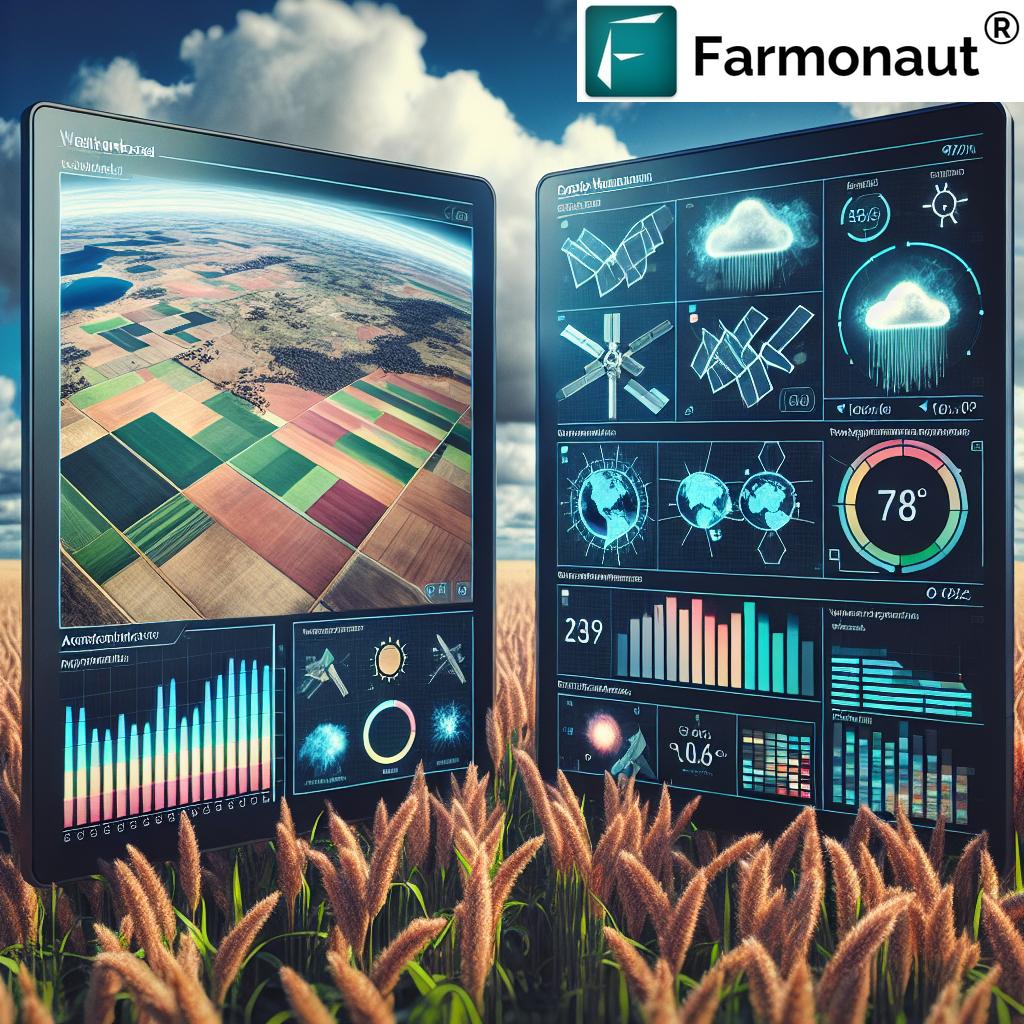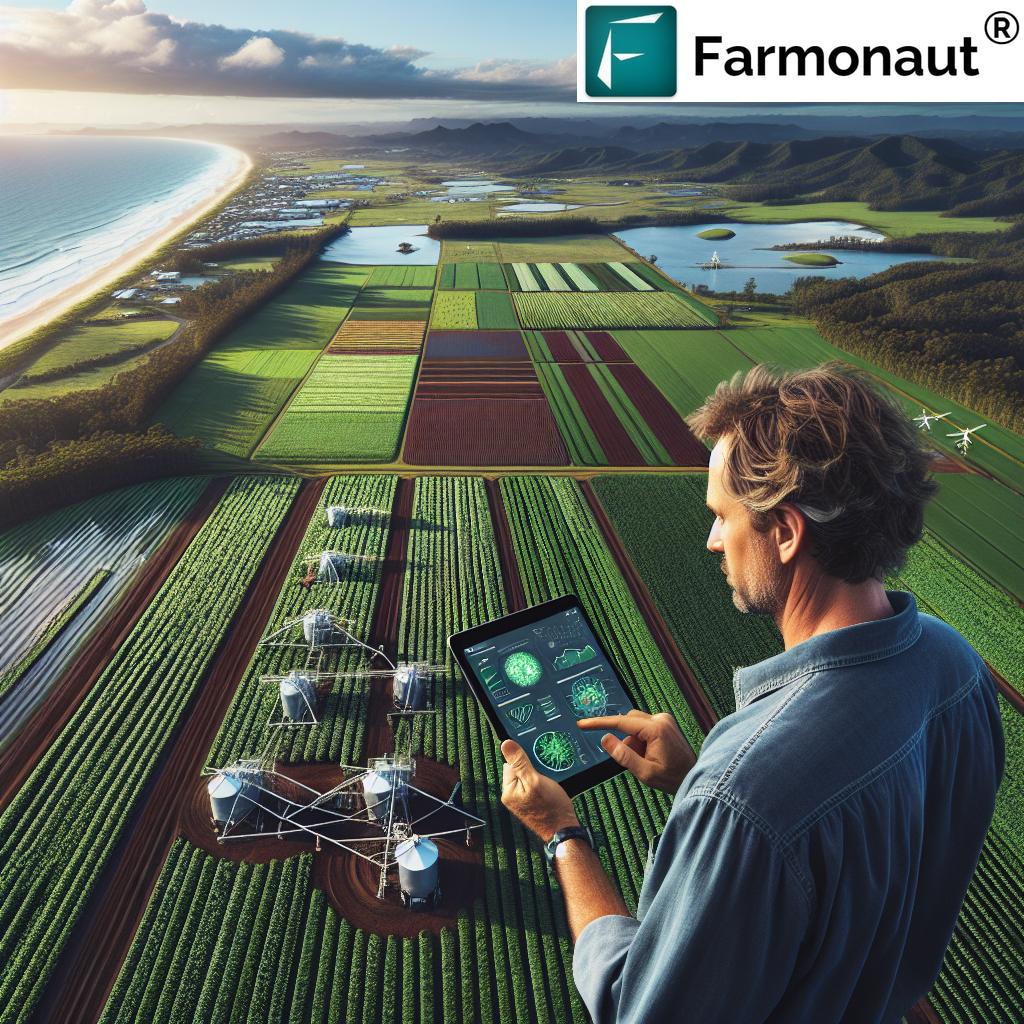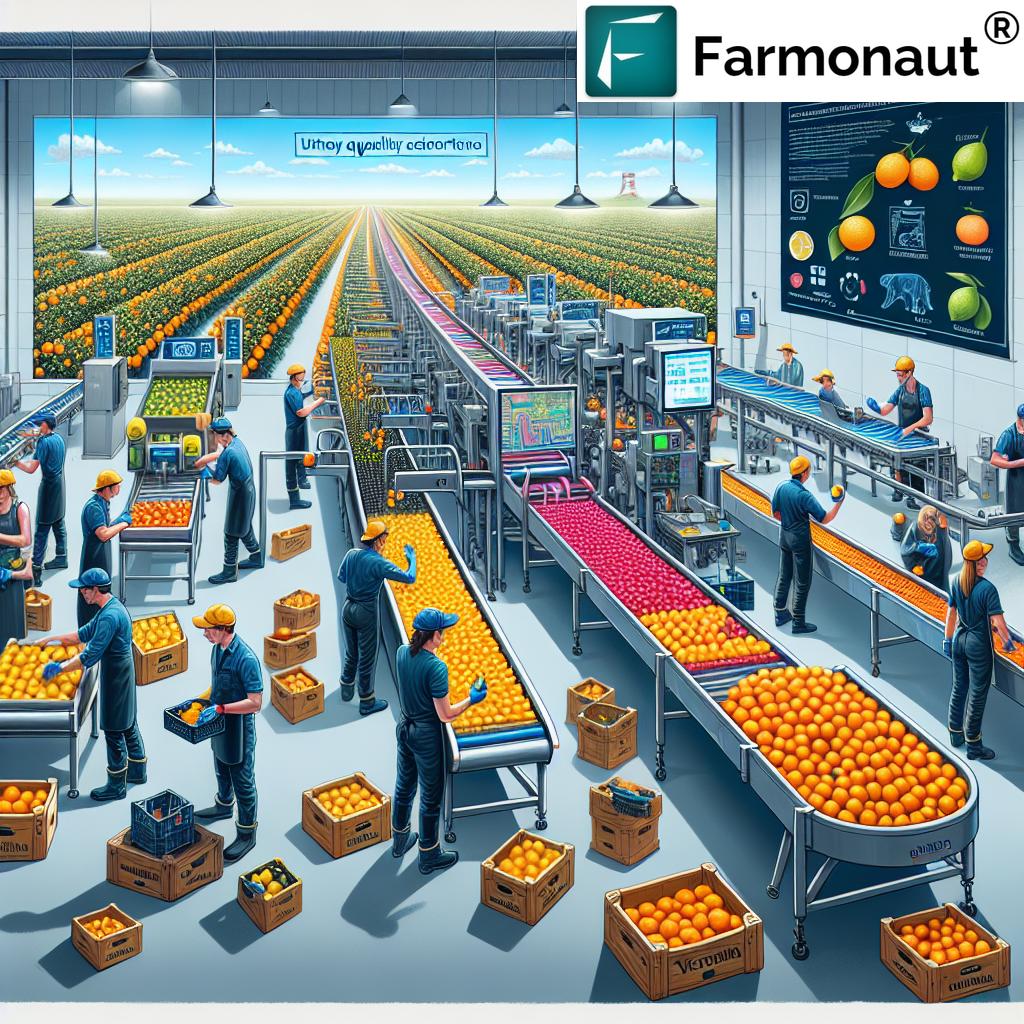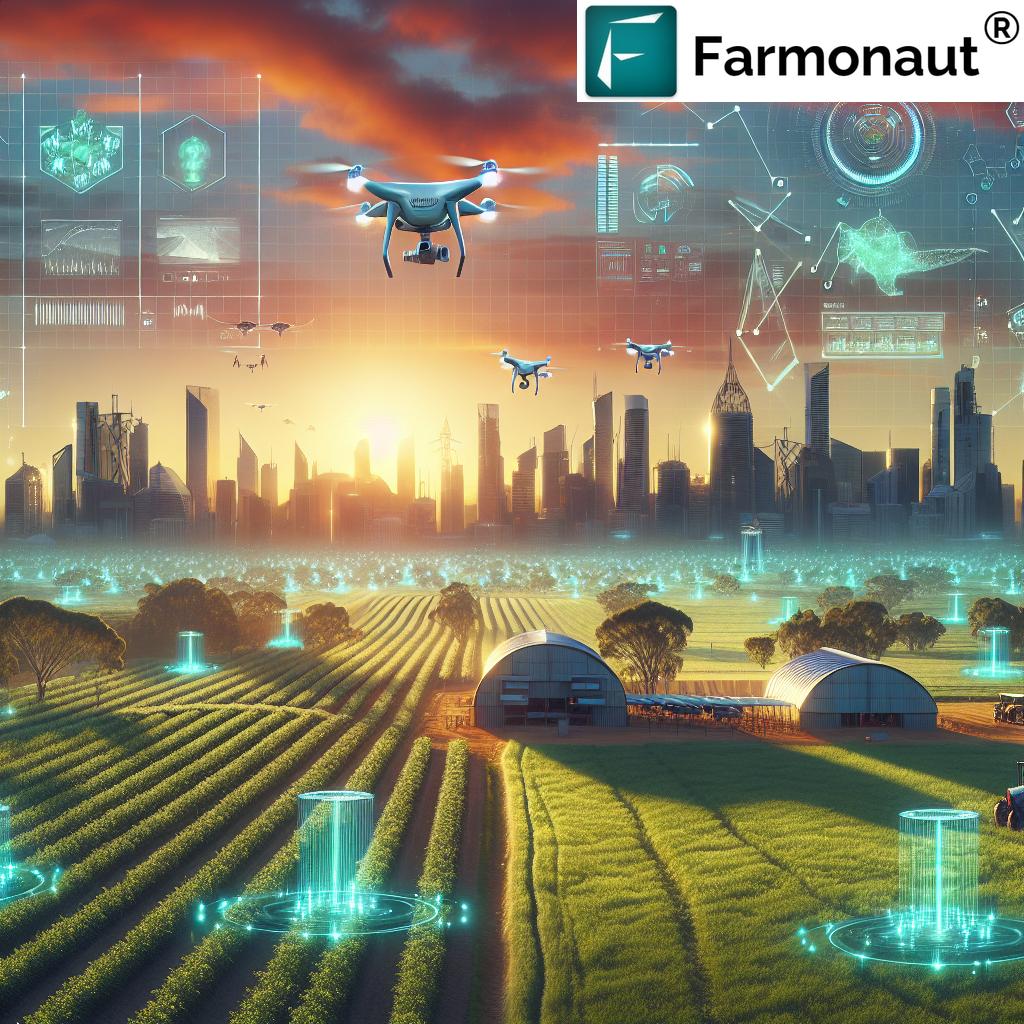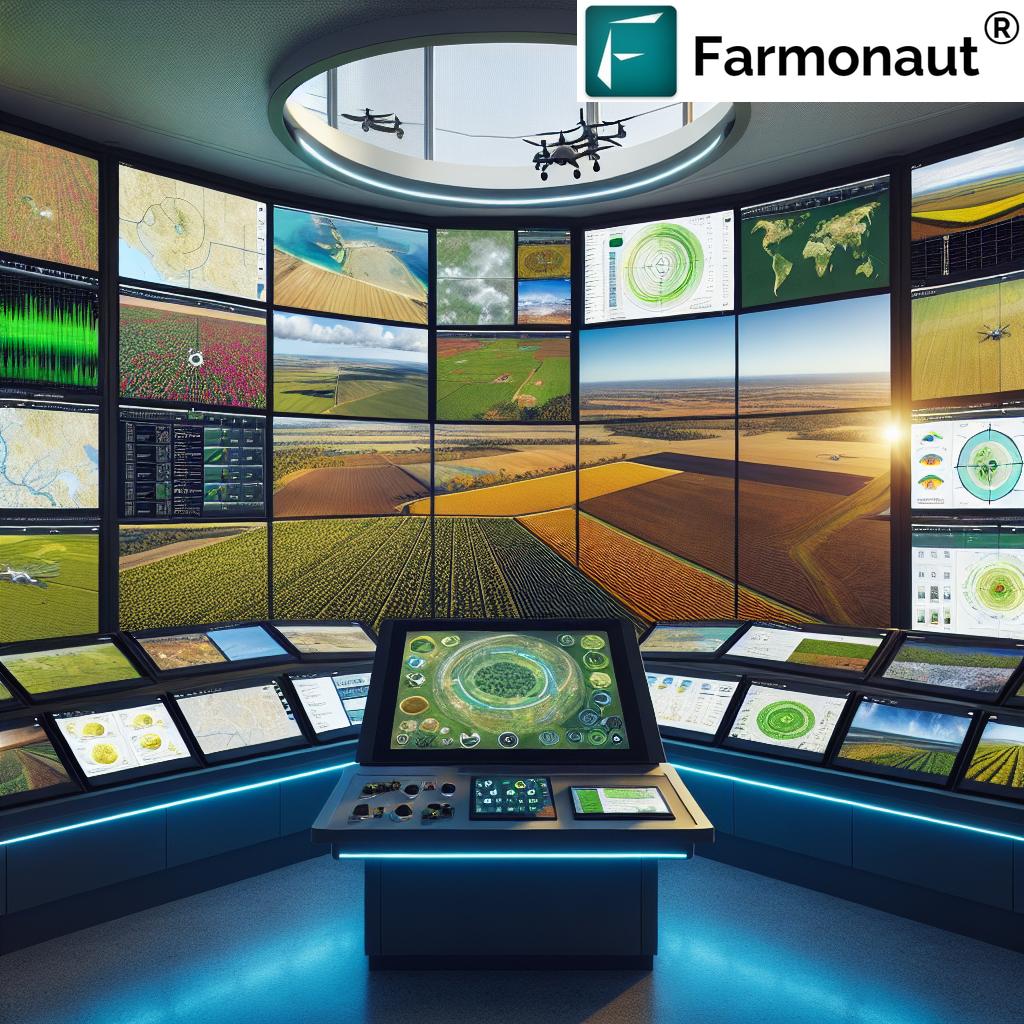Revolutionizing Australian Agriculture: How Farmonaut’s Smart Soil Moisture Sensors and Remote Sensing Enhance Precision Farming
“Advanced soil moisture sensors can detect water content changes as small as 0.1% in agricultural fields.”
In the vast landscapes of Australia, where agriculture plays a pivotal role in the nation’s economy, a quiet revolution is taking place. At the forefront of this transformation is Farmonaut, a pioneering agricultural technology company that’s changing the face of farming through innovative precision agriculture technologies. In this comprehensive exploration, we’ll delve into the cutting-edge world of vadose zone research and soil science, uncovering how advanced remote sensing technologies and precision agriculture techniques are revolutionizing crop water management and soil health monitoring in the Australian context.
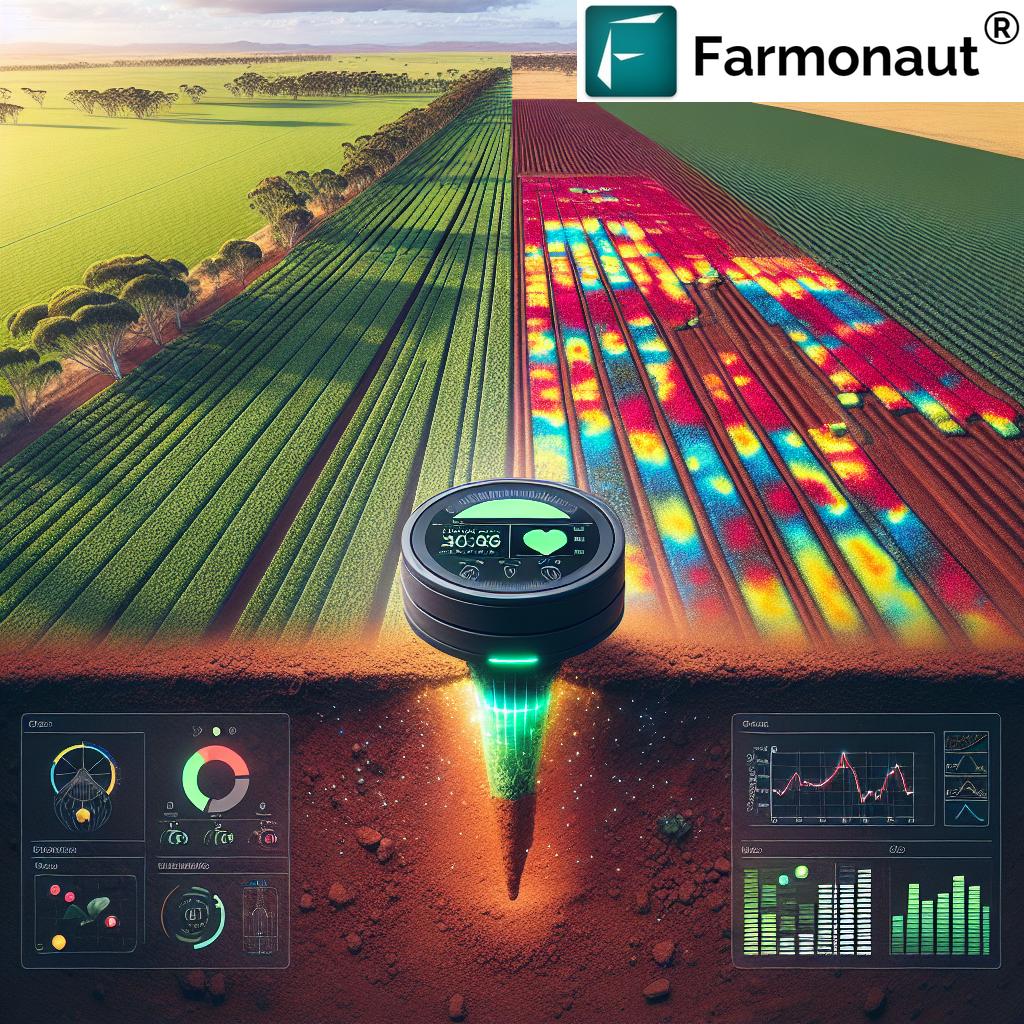
As we embark on this fascinating journey through the unseen world beneath our feet, we’ll explore how Farmonaut’s smart farming solutions are leveraging groundbreaking scientific advancements to enhance crop productivity and resource management across Australia’s diverse agricultural landscape.
The Vadose Zone: A Critical Frontier in Australian Agriculture
The vadose zone, also known as the unsaturated zone, is the region of soil between the land surface and the water table. In Australia’s often arid and semi-arid climates, understanding the dynamics of this zone is crucial for effective water management and crop production. Vadose zone research has become a cornerstone of modern agricultural science, providing insights into:
- Soil moisture dynamics
- Nutrient transport
- Root zone processes
- Groundwater recharge
Farmonaut’s precision agriculture technologies tap into this vital research, offering Australian farmers unprecedented access to data-driven insights about their soil’s health and water content.
Smart Soil Moisture Sensors: The Heart of Precision Agriculture
At the core of Farmonaut’s innovative approach are its smart soil moisture sensors. These advanced devices represent a quantum leap from traditional soil moisture measurement methods, offering real-time, high-precision data that’s crucial for optimal crop water management in Australia’s often water-scarce environments.
Key features of Farmonaut’s soil moisture sensors include:
- High-resolution measurements at various soil depths
- Wireless connectivity for real-time data transmission
- Integration with weather data and crop models
- Long battery life suitable for remote Australian farming locations
By providing accurate, timely information about soil moisture levels, these sensors enable Australian farmers to make informed decisions about irrigation scheduling, reducing water waste and optimizing crop yield.
Remote Sensing: A Bird’s Eye View of Australian Farms
Complementing the ground-level data from soil moisture sensors, Farmonaut’s remote sensing capabilities offer a comprehensive overview of farm health across vast Australian agricultural lands. By harnessing satellite imagery and advanced data analysis techniques, Farmonaut provides farmers with:
- Vegetation health indices (e.g., NDVI)
- Crop stress detection
- Yield prediction models
- Large-scale soil moisture mapping
This satellite-based approach is particularly valuable in Australia, where farms can span thousands of hectares, making traditional monitoring methods impractical and time-consuming.
Access Farmonaut’s cutting-edge agricultural technologies:
For developers interested in integrating Farmonaut’s powerful satellite and weather data into their own applications, explore our API and comprehensive API Developer Docs.
Evapotranspiration Measurement: Balancing the Water Budget
Understanding evapotranspiration (ET) is crucial for efficient water management in Australian agriculture. Farmonaut’s advanced ET measurement methods combine data from soil moisture sensors, weather stations, and remote sensing to provide accurate estimates of water loss from soil and plants. This information is vital for:
- Optimizing irrigation schedules
- Improving water use efficiency
- Enhancing crop yield potential
- Adapting to Australia’s variable climate conditions
By integrating ET data with other farm management tools, Farmonaut helps Australian farmers make more informed decisions about water allocation and crop selection.
Soil Health Monitoring: Beyond Moisture
While soil moisture is a critical factor, Farmonaut’s soil health monitoring extends far beyond water content. The company’s comprehensive approach includes:
- Nutrient analysis
- Soil structure assessment
- Organic matter content tracking
- pH and salinity monitoring
This holistic view of soil health is particularly important in Australia, where soil degradation and salinity are significant challenges. By providing detailed insights into soil conditions, Farmonaut enables farmers to implement targeted soil management strategies, improving long-term sustainability and productivity.
“Precision farming techniques using remote sensing can reduce water usage by up to 30% in crop production.”
Spatial-Temporal Soil Moisture Dynamics: Mapping Variability
Australian farms often encompass diverse soil types and microclimates within a single property. Farmonaut’s technology excels in mapping spatial-temporal soil moisture dynamics, providing farmers with detailed insights into how soil moisture varies across their land and over time. This information is crucial for:
- Identifying problematic areas (e.g., waterlogging or drought-prone zones)
- Implementing site-specific management practices
- Optimizing crop placement and rotation strategies
- Enhancing overall farm productivity
By visualizing these dynamics through user-friendly interfaces, Farmonaut empowers Australian farmers to make data-driven decisions that account for the unique characteristics of their land.
Preferential Flow: Unraveling Complex Soil-Water Interactions
Preferential flow, the rapid movement of water through specific pathways in the soil, can significantly impact nutrient leaching and water distribution. Farmonaut’s advanced soil monitoring technologies help Australian farmers understand and manage preferential flow by:
- Detecting rapid changes in soil moisture at different depths
- Identifying potential nutrient loss pathways
- Optimizing fertilizer application timing and methods
- Improving overall water and nutrient use efficiency
This level of insight is particularly valuable in Australia’s often sandy or cracking clay soils, where preferential flow can be a significant challenge for water and nutrient management.
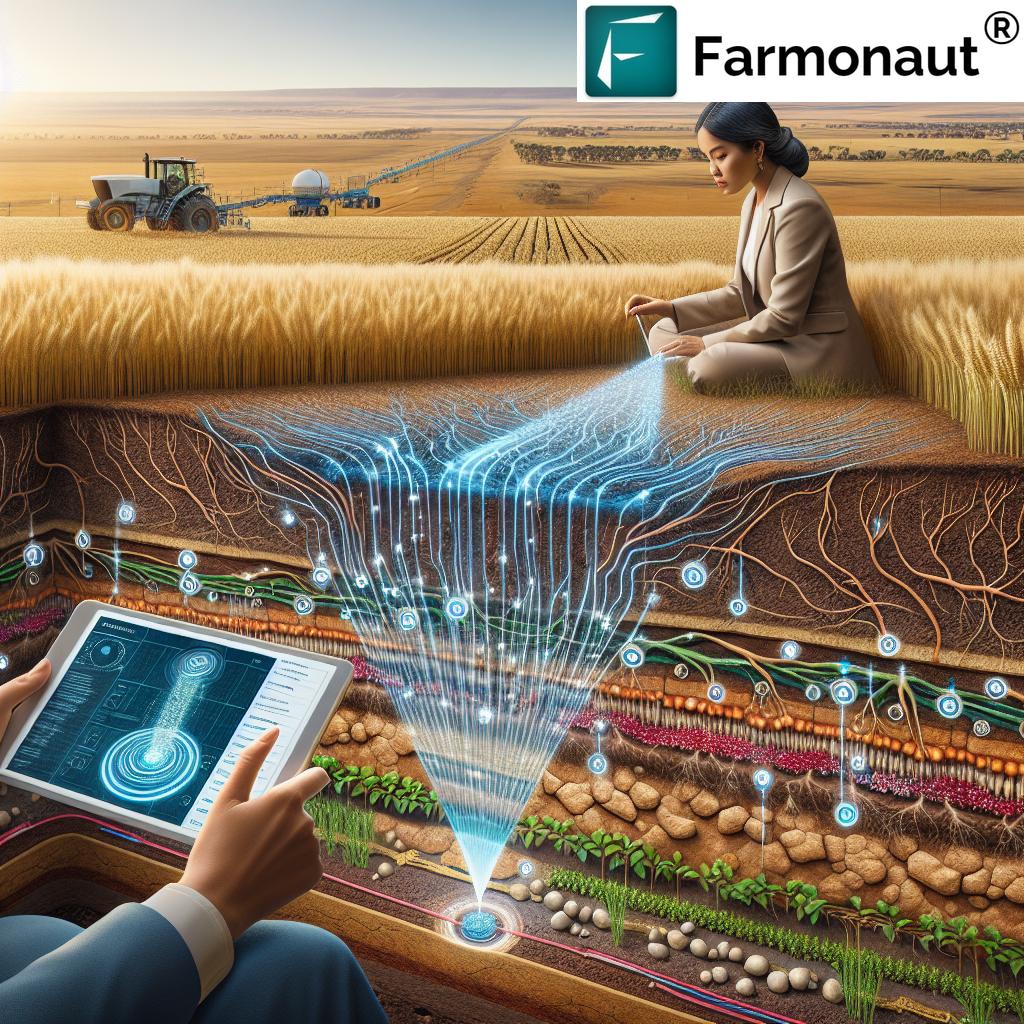
Hydrogeophysics: Peering Deeper into the Soil
Farmonaut’s commitment to cutting-edge science extends to the field of hydrogeophysics, which uses geophysical methods to study subsurface water dynamics. In the Australian context, this technology offers valuable insights into:
- Groundwater recharge processes
- Soil structure and layering
- Deep root zone moisture content
- Salinity mapping
By incorporating hydrogeophysical data into its platform, Farmonaut provides Australian farmers with a more comprehensive understanding of their land’s water resources, enabling more sustainable and efficient water management practices.
Agricultural Data Analytics: Turning Insights into Action
The true power of Farmonaut’s precision agriculture technologies lies in its robust agricultural data analytics capabilities. By processing and analyzing vast amounts of data from soil moisture sensors, remote sensing, and other sources, Farmonaut offers Australian farmers:
- Predictive modeling for crop yields and water requirements
- Early warning systems for pest and disease outbreaks
- Customized recommendations for irrigation and fertilizer application
- Long-term trend analysis for sustainable farm planning
These analytics empower farmers to make proactive, data-driven decisions that optimize resource use and maximize productivity in Australia’s challenging agricultural environments.
Soil-Plant-Rhizosphere Interactions: A Holistic Approach
Farmonaut’s technologies go beyond simple soil monitoring to explore the complex interactions between soil, plants, and the rhizosphere (the region of soil influenced by root secretions and microorganisms). This holistic approach provides Australian farmers with insights into:
- Root system development and health
- Microbial activity in the soil
- Nutrient cycling and availability
- Plant stress responses to soil conditions
By understanding these intricate relationships, farmers can implement management practices that foster a healthier, more productive soil ecosystem, leading to improved crop resilience and yield.
Vadose Zone Modeling: Predicting the Future of Soil Health
Farmonaut’s platform incorporates advanced vadose zone modeling capabilities, allowing Australian farmers to simulate and predict soil-water dynamics under various conditions. These models are invaluable for:
- Scenario planning for different irrigation strategies
- Assessing the potential impact of climate change on soil moisture
- Optimizing crop selection and rotation plans
- Evaluating the long-term effects of different management practices
By providing a window into potential future soil conditions, these models enable farmers to make informed decisions that promote long-term sustainability and productivity.
Experience Farmonaut’s innovative agricultural solutions on your mobile device:
Comparison of Soil Moisture Monitoring Technologies
| Technology Type | Measurement Depth | Accuracy (%) | Real-time Data | Remote Access | Integration with Other Farm Data | Cost-effectiveness (1-5 scale) |
|---|---|---|---|---|---|---|
| Manual soil sampling | Variable | 70-80 | No | No | Limited | 2 |
| Tensiometers | Shallow to medium | 80-90 | No | No | Limited | 3 |
| Neutron probes | Deep | 90-95 | No | No | Limited | 1 |
| Time Domain Reflectometry (TDR) | Shallow to medium | 90-95 | Yes | Limited | Moderate | 3 |
| Capacitance sensors | Shallow to medium | 85-95 | Yes | Yes | Good | 4 |
| Farmonaut’s Smart Soil Moisture Sensors | Shallow to deep | 95-98 | Yes | Yes | Excellent | 5 |
| Satellite-based remote sensing | Surface | 80-90 | Yes | Yes | Excellent | 5 |
The Future of Australian Agriculture with Farmonaut
As we look to the future of Australian agriculture, Farmonaut’s innovative approach to precision farming stands at the forefront of a new era. By combining advanced soil moisture sensors, remote sensing technologies, and sophisticated data analytics, Farmonaut is empowering Australian farmers to:
- Optimize water use in the face of increasing climate variability
- Enhance crop yields while minimizing environmental impact
- Make data-driven decisions that improve farm profitability
- Contribute to the sustainable management of Australia’s precious soil and water resources
The integration of these cutting-edge technologies into everyday farming practices is not just revolutionizing agriculture; it’s paving the way for a more sustainable and productive future for Australian farming.
Conclusion: Embracing the Agricultural Revolution
As we’ve explored throughout this comprehensive look at Farmonaut’s technologies and their impact on Australian agriculture, it’s clear that we’re witnessing a true revolution in farming practices. From the microscopic world of soil-plant-rhizosphere interactions to the macro-scale insights provided by satellite remote sensing, Farmonaut is providing Australian farmers with unprecedented tools to understand and manage their land.
The integration of smart soil moisture sensors, advanced remote sensing capabilities, and powerful data analytics is not just improving farm productivity; it’s fundamentally changing how we approach agriculture in the face of climate change and resource scarcity. By embracing these innovative technologies, Australian farmers are positioning themselves at the forefront of sustainable, efficient, and productive agriculture.
As we look to the future, the continued development and adoption of precision agriculture technologies like those offered by Farmonaut will be crucial in ensuring food security, environmental sustainability, and economic prosperity for Australia’s agricultural sector. The revolution is here, and it’s growing from the ground up.
Frequently Asked Questions (FAQ)
Q: How do Farmonaut’s soil moisture sensors differ from traditional methods?
A: Farmonaut’s sensors offer real-time, high-precision data with wireless connectivity and integration with other farm data, providing more comprehensive and actionable insights compared to traditional methods.
Q: Can Farmonaut’s technology be used on all types of Australian farms?
A: Yes, Farmonaut’s solutions are scalable and adaptable to various farm sizes and types across Australia, from small holdings to large commercial operations.
Q: How does remote sensing contribute to precision agriculture?
A: Remote sensing provides large-scale data on crop health, soil moisture, and other key indicators, allowing farmers to make informed decisions across vast areas efficiently.
Q: What kind of return on investment can farmers expect from implementing Farmonaut’s technologies?
A: While ROI can vary, many farmers report significant improvements in water use efficiency, crop yields, and overall farm productivity, often leading to substantial cost savings and increased profitability.
Q: How does Farmonaut help farmers adapt to climate change?
A: By providing detailed data on soil and crop conditions, Farmonaut enables farmers to make more informed decisions about water management, crop selection, and timing of farm operations in response to changing climate conditions.


